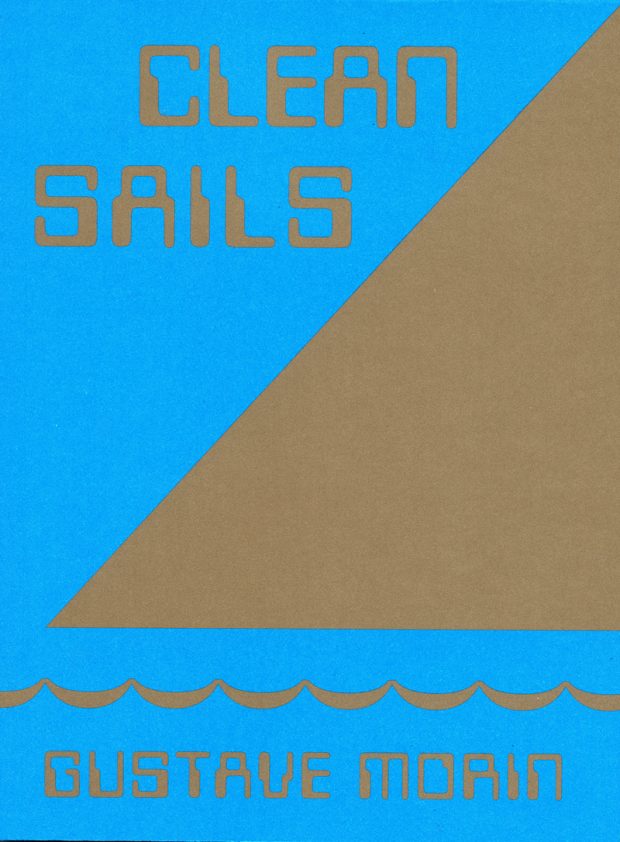From the Archive: gustave morin ‘Clean Sails’ interview (CAROUSEL 36)
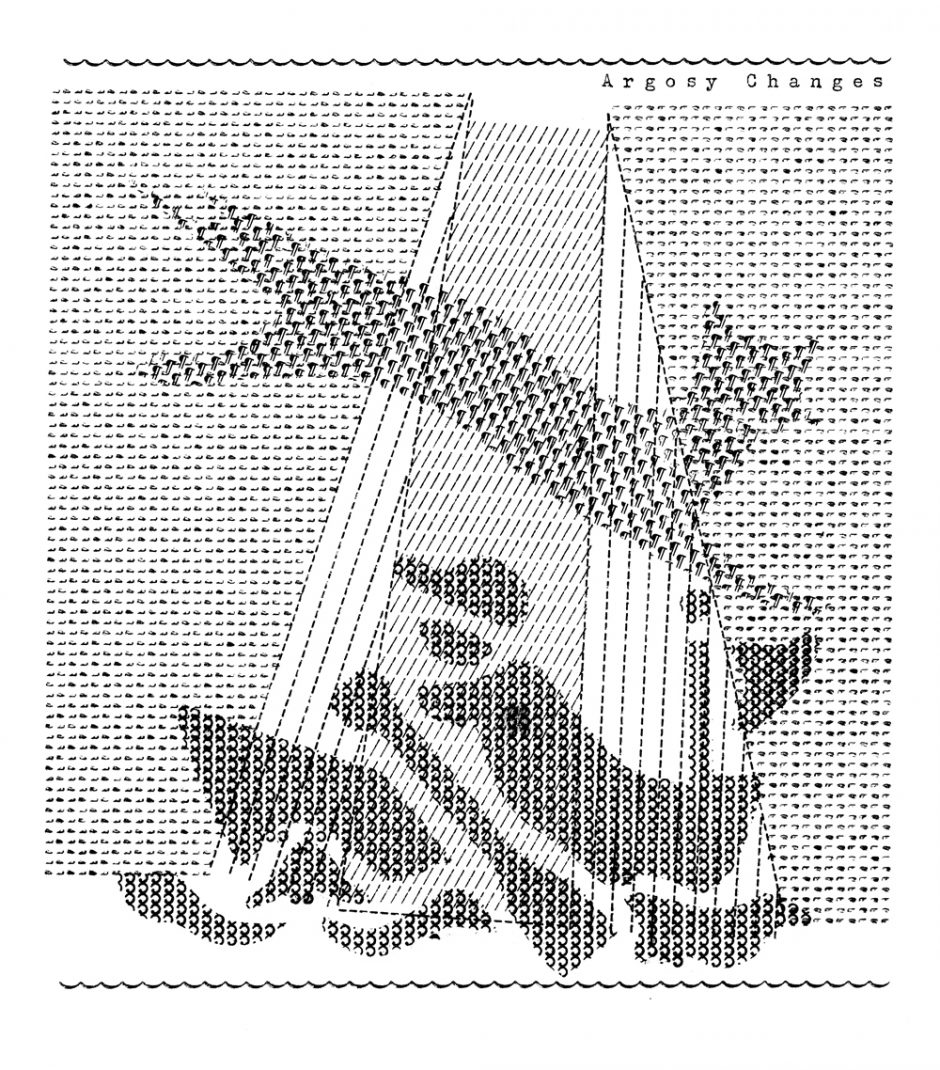
Canadian ‘para-literary agent provocateur’ gustave morin has been working in the fields of composition & performance for the last twenty years. As a maker of concrete, found, collage, typewriter & sound poetry, his creative practice always manages to the blur the borders between poetry & visual art, offering up startling hybrid works that resist conventional reading.
Clean Sails, a 164 page volume of visually complex, next-generation typewriter poems composed using dozens of different typewriters — the culmination of thousands of hours spent typing — was released in 2015 by New Star Books, Vancouver.

Interview conducted November, 2015

Talk about the conditions that led to your working on this project.
in 1990, i bought a typewriter at a garage sale for 5 bucks. 6 years later, i hosted a dinner party at a loft space i was living in on university avenue here in the dub, in front of which city workers had stripped the road down to the dirt. that night we dug a hole and dropped the typewriter in. a week later they repaved the road, my time capsule preserved intact. that fabled typewriter under the street has been sending me signals ever since, which i dutifully and faithfully attempt to render in my poems.
A lovely little origin story about a hidden typewriter, a kind of buried treasure; things could hardly begin in a better way. Is Clean Sails, therefore, a kind of map?
maybe only at the furthest reach of metaphor. Clean Sails is certainly not about sailing in any conventional sense, though it is about exploring, and ships are traditional symbols of this very thing. and the surprise at the end, the buried treasure — this all happens after the book is closed. the hope is that the book leads one out of the book itself and back out into life — like all good art. and those aspects of political geography which are present in the volume could be read as a series of metaphor-maps charting the course our benighted civilization seems hellbent on following out to its death. i’m definitely reporting on some of that. i’ll add that i look at maps almost every single day. as a visual poet, i hope to one day make real imaginary maps, speculative maps, maps of unknown territories, maps which plot my own escape routes which others may use if they need escape routes of their own …
As I recall, travel itself was a kind of fuel that propelled this work at the very start. Set the stage for us?
i have an art star friend in one Bruce McClure of new york city, who is an exemplary neo-expanded cinema projector performance artist that i’ve known for the better part of the last 15 years. Bruce has done exceptionally well for himself in his chosen racket. in 2008, i was fortunate enough to travel with him to ghent, belgium, to assist with his performance for the film festival courtisane. and then again, in 2010, i was lucky enough to help him in sao paulo, brazil for the on/off festival. i should add that i am an extremely unwealthy person, and i would never have made it to either europe or south america before i was 40, had it not been for his generous underwriting of these two trips.
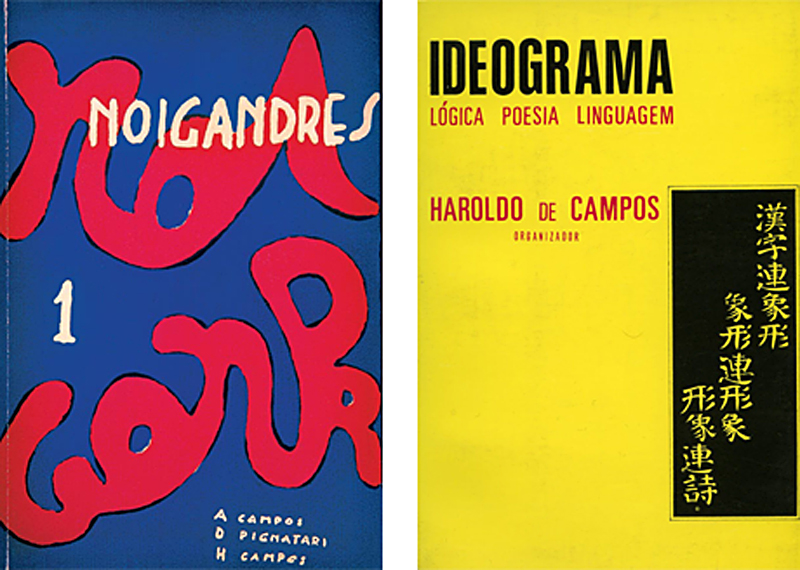
sao paulo was the hometown of the Noigandres group of brazilian concrete poets — some of the most important first wavers from the 50’s came out of this group: Augusto de Campos (who is still living!), Décio Pignatari, Pedro Xisto (who did a stint in toronto in the 60’s) etc. as it turned out, Bruce and i ended up staying a mere 2 blocks away from the casa das rosas, where Haroldo de Campos’ papers are headquartered (lots of concrete poetry around there). since sao paulo dwarfs new york city without even trying, this was a piece of very good luck. naturally enough, upon my return, i brought home with me a charge that i soaked up from the trip like a sponge; and thus did i begin the book that has come to be known as Clean Sails. like every underprivileged kid in the world who never really gets to go anywhere, i get more out of travel than most of those people who travel regularly. and it always finds its way into my work as a matter of course.
And so, the ghost of the typewriter rises out of the concrete here in North America. The typewriter, of course, played an important role in concrete poetry’s development; it was one of the main tools employed in the 50’s, 60’s and 70’s — a rich period where the bulk of typewriter concrete works by artists like bill bissett, Dom Sylvester Houédard and bpNichol were being created.
i guess the work in the 50’s and 60’s was part of the modernist fad gadgetry of the times, not unlike op art, pop art, happenings, early video, etc. concrete rode the crest of that wave for about 15 years; then it too went away. but the tendrils in the underground never die. and so, lots of under-the-radar work took place in the 70’s, 80’s and 90’s too. that’s when my own work began.

Clean Sails offers a formal shift from the writing method you employed in previous books, which was primarily collage-based. Talk about the process of writing Clean Sails. Define its boundaries.
that’s a misperception many might indulge — that some sort of abrupt formal shift has taken place in my work with this new book. to set the record straight, the typewriter has elementally never been absent from any of my books; it’s been present beginning with the first one, Rusted Childhood Memoirs, written some twenty-four years ago now. there has not been a shift, so much as a constant winnowing away from collage and toward the typewritten. i think the typewriter started out in my work as just another compositional element in the service of the grander leitmotif of the collage and the cut-ups i was obsessed with. as i moved further and further in this direction, the collages themselves slowly became less clunky and chunky, the lines grew to be more refined, more delineated, to the point where i eventually got to a place where i was dispensing with the collage elements altogether, and had forced a concentration of the typewriter as a compositional tool in and of itself. ergo, ‘the typewriter poem’, examples of which began to appear in my work as standalone pieces going as far back as fifteen years. half of the etcetera barbecue (2006) contains typewriter poems that are not markedly different from the ones i’m presenting in Clean Sails. it seems to me that as i’ve evolved, i’ve taken the pure collage elements out of the writing to arrive at a place that sees me now almost collaging with the typewriters themselves, absent any glue.
this of course all seems to imply that i’m all done with my work in collage, which would be a lie. there are many ways that i know of if it is my wish to write: “i own many pens”, to quote F.A. Nettelbeck.
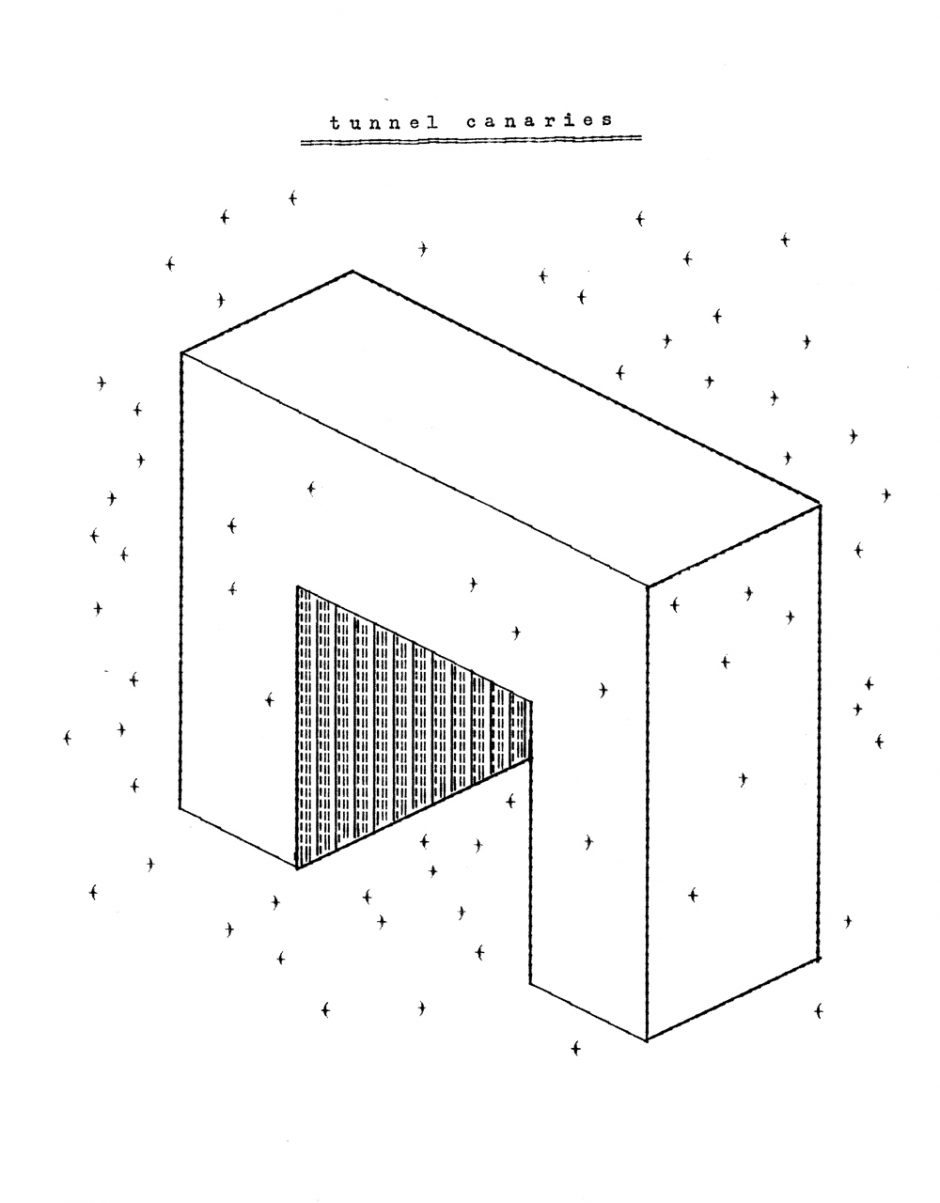
I know you’ve been keeping meticulous notes on the procedures related to the works created for the project. These notes are not meant to be publicly accessible; what did this note-keeping exercise offer you?
the captain’s log — nearly 700 double-sided pages. i’ve always kept journals, but until now, i have never kept a journal documenting the various stages of the development of so large a work as Clean Sails. that was a first. and it evolved quite naturally: when writing typewriter poems i have always hoarded the worksheets i start out from, fresh pages that hit the machines as i make my various little discoveries. over the course of a writing day, i return again and again to these same sheets, which inadvertently witness the creation of a sort of palimpsest of that day’s typings. these are then used further as the areas of notation in which i discuss with myself what the concerns of that day’s business are (and this, in the typographic space between all the earlier notations made, so they get to start looking like pretty ends in and of themselves). this process became ‘the captain’s log’. the discoveries themselves — the meat and potatoes of the typewriter poetry — are then treated to clean, fresh, tidy sheets in which i then attempt to effect the effect i’m after, which, if they come off successfully, become the poems themselves. the value of this document cannot be underestimated, while at the same time, i am also keen to see this document remain in the shadows as a kind of unseen hand conspiratorially guiding the book. in other words, were i to erase this document, it wouldn’t matter. the poems are the thing, not the journey of the process of arriving at the poems. i see the captain’s log as the scaffolding i’ve taken away after building up my unholy cathedral. not too many 160 page books
of poetry have 700 page hidden skeleton key/rosetta stone mongrels backing them up; it’s my eraserhead baby of a blueprint for Clean Sails.
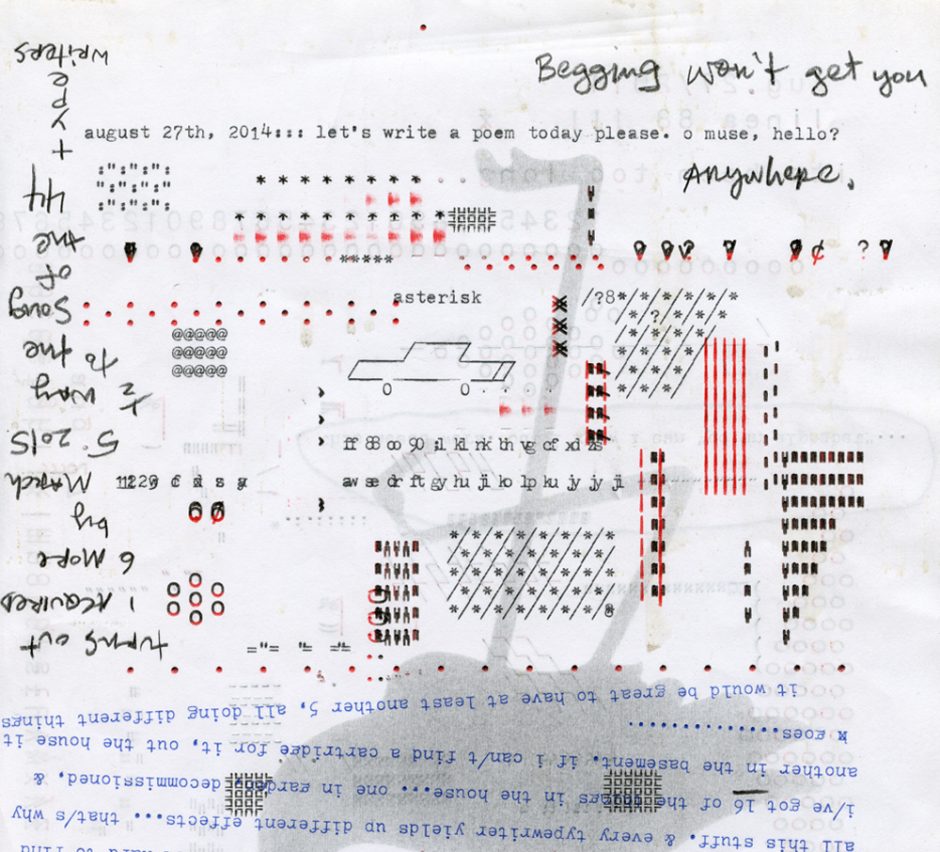
There are 111 poems in the book. What is the significance of that number?
at this point, i’m not sure it matters. i needed a number at the beginning — a number which would assist me so that i psychologically knew well in advance how far i would be forced to stretch out my legs in the actual writing of the book. the number needed to be big enough to be a feat — but at the same time, it could not be so large as to render the project impossible to execute. there were several stretches in the making of the book where i unwisely supposed i had bitten off far more than i could chew. in the end it really ended up being a perfect number, especially given my choice to include the nine poems in Nein Typos (2008), making up a book of 120 poems altogether. i don’t know that the next book of them will be so big; sixty-two months is a long time to sink into one enterprise.
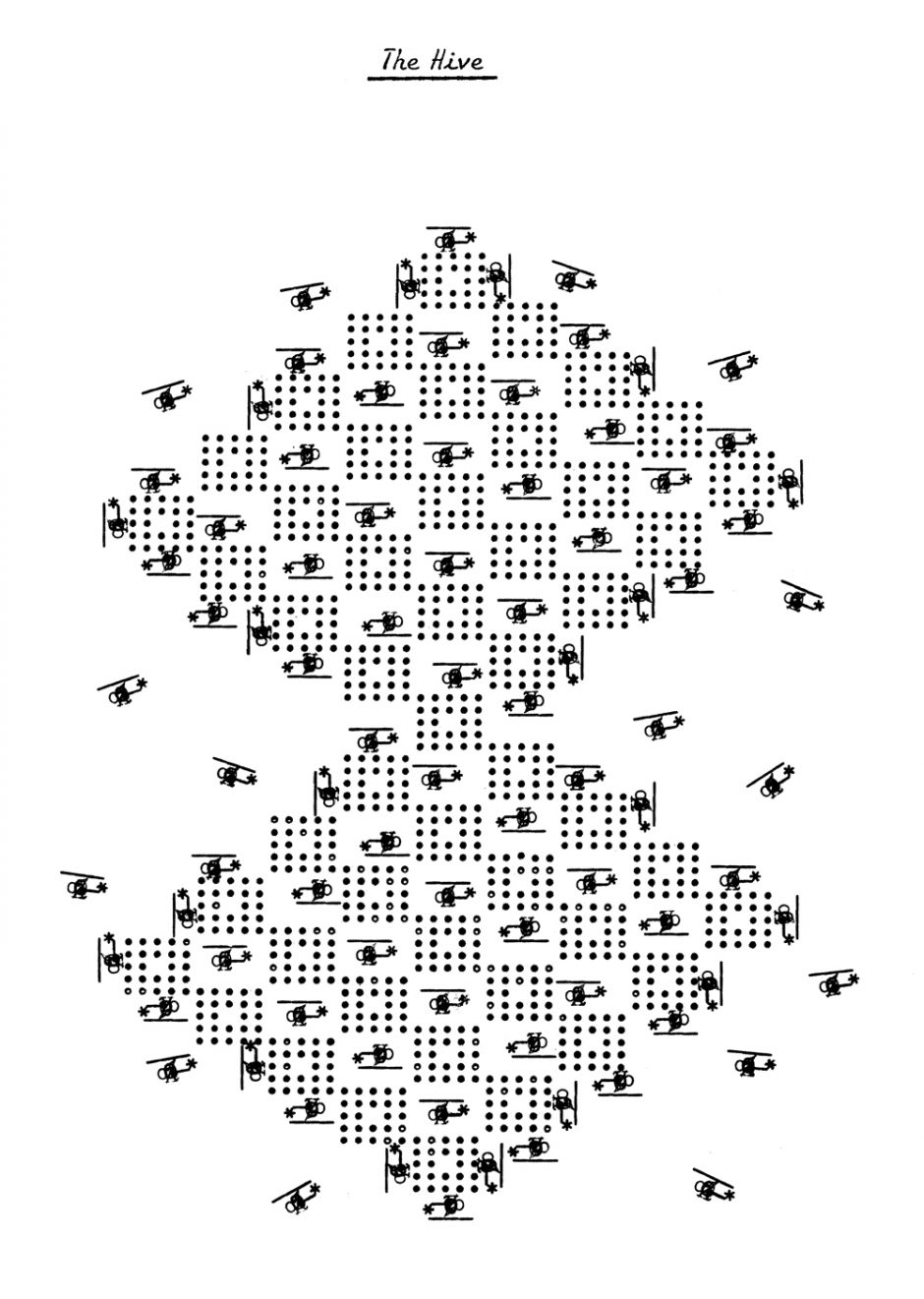
On a technical level, one of the things that make these poems fascinating is that the project pivots on an analogue constraint. It’s wild to try and deconstruct all the individual typed movements and paper shifts required to even create a single work like ‘The Hive’ by hand. Do you always get it right in one go?
through a very sustained and concentrated effort, most of the time i do get it right in one go. but only after much planning and preparation, and only after psychologically ramping up to the task. basically, i try to think about what i need to do long before i actually do it; i think into that space. and no matter what level of planning and preparation i put into a piece, sometimes i do make mistakes, which are extremely unforgiving, crushing mistakes. i liken the game i consent to play as being in many ways a lot like snakes and ladders. at a certain point in the life of a typewriter poem in the process of being composed, the stakes get higher and higher as you move closer and closer to the finish. success advances one quite triumphantly up to the next level, several floors up. conversely, defeat, certain with one fatal slip of the finger, plunges one back to the very beginning, where we start all over, from scratch. it is not a cheerful day when, through some fault of my own, this becomes necessary; when what i was attempting to say with the poem is left out in the weeds. an unfinished fragment from january 2011 can easily be ruined in october of 2014, never to be captured again with any fidelity to the original that was lost. it makes for a somewhat nervous poetry, but at least here there is no safety, and this danger helps to make for some spice. the joy of bringing off a so-called ‘perfect piece’ is almost worth the sorrows of a typo. (when we speak of works of concrete poetry that are clean, this is what is meant; clean is without typo or other emblemishment.)
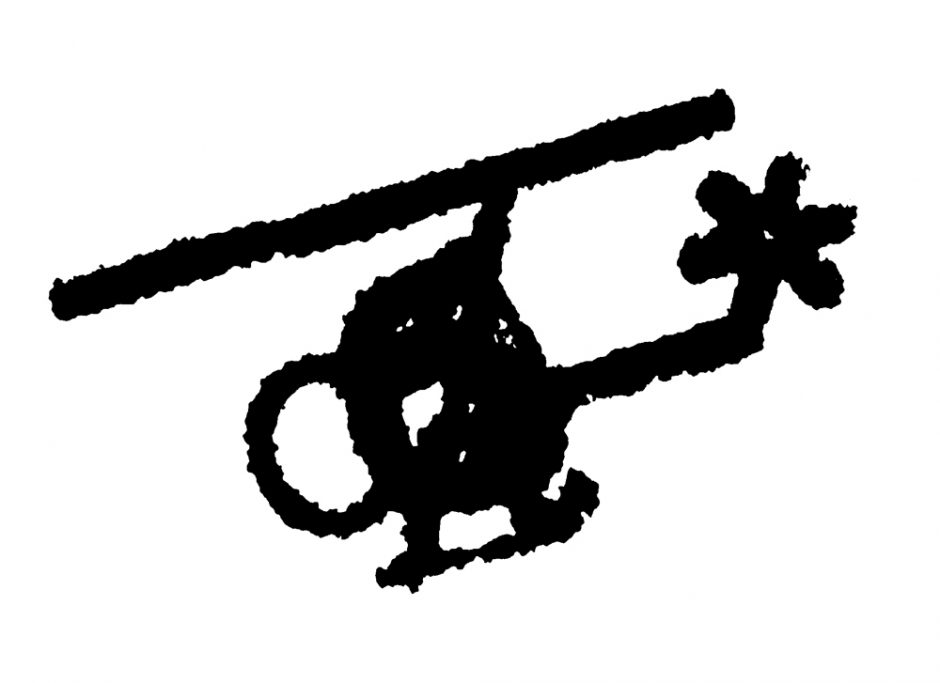
I really enjoyed hearing you privately describe the steps it takes to create even a single rendition of your helicopter, one of the various ‘characters’ that populate the book — are you willing to publicly walk us through the density of moves?
i don’t want to kiss and tell — such configurations are part of the booty i’ve brought back from the vast desert i walk around in when i’m on the blank page. so i won’t reveal how i type the helicopter, but i will tell you how it came about …
… i was looking into some of the rudiments of the hebrew/aramaic alphabets — i have such a typewriter and i knew nothing about these languages whatsoever. it felt like i was typing into a literal and figurative dark, so i began, in my small way, looking into it. what i discovered, or noticed, simply, was how related were our letters to the symbols to which they referred. i began to see into a deeper, almost hidden aspect to language that i never knew existed, viz., ‘Q’ is monkey, ‘A’ is ox, etc. — somehow these pictographic forms had settled down into our alphabet through the centuries, and yet this lineage has somehow escaped us. but there these letters were, on this typewriter, and it turns out they all had meanings as individual letters. each of these letters are fascinating, but a few of them caught my fancy. dalet, which becomes delta, which becomes ‘D’, was not only the symbol for door, ‘D’ itself was door, was the symbol for a door and was a door at once. so i made up the piece, ‘dial D for dial’(which happens to be the first text in the book and which is itself also a door) as an outgrowth of these types of symbolic readings into language. the night i wrote this poem i had, for the first time, the strong sense that the concrete poetry was being massively fortified by the intuition that somehow i really was casting a spell when i typed one of these poems. as i moved through the piece, i knew that if i made a mistake, the spell would be broken; but if i could manage to sustain it, the spell would be cast. D and D and D and D and D … and sure enough, i got to the end, without a mistake, and i thought, “my o my, i’ve created a door, and what i do from this point is on the other side of that door. i’m actively crossing the threshold of my own construction. neat-o.” i put this finished piece to the side, pulled a new sheet out and resumed my typing. in less than 10 minutes, i had somehow figured out how to type a helicopter. the two are inter-related: the door, and then the helicopter, on the other side of that door.
such are the minor magics that typewriter poetry is capable of. and it is this process to which i will forever remain apprenticed.
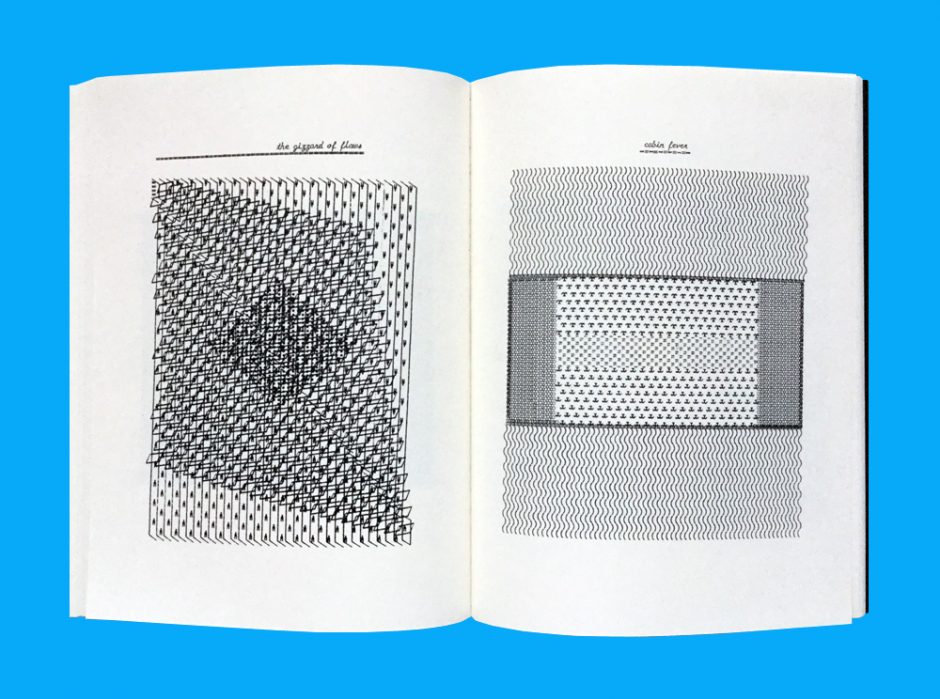

BONUS!
Watch this strange book trailer / art film created for Clean Sails (directed by Jarrod Ferris)

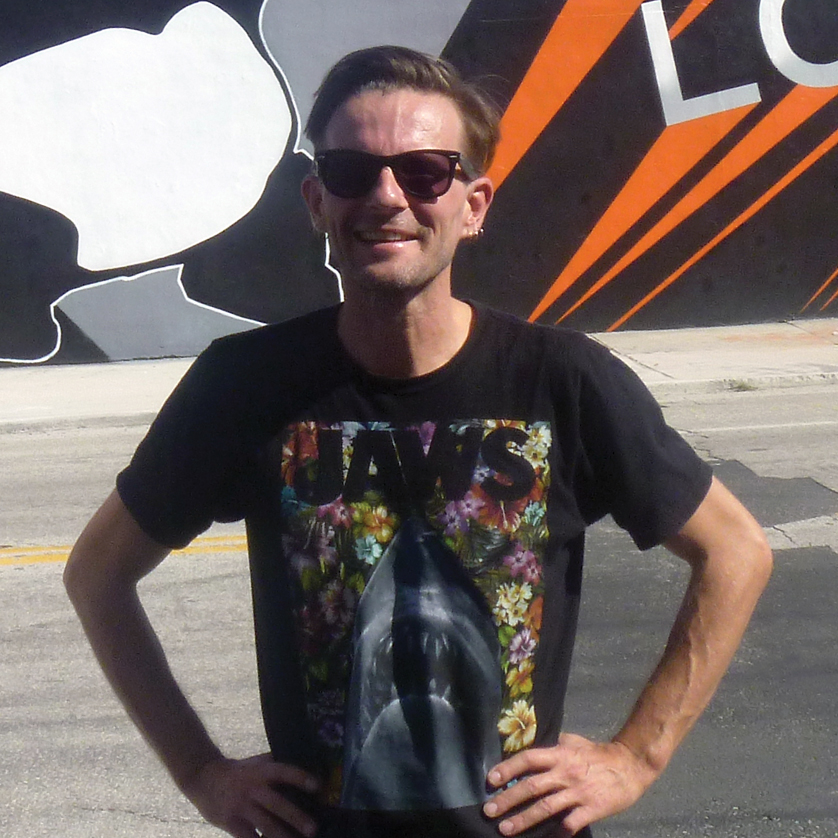
Clean Sails: gustave morin
appeared in CAROUSEL 36 (2016) — buy it here

